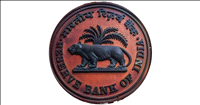China’s Belt and Road Initiative will shift to a greener approach after a decade of big projects and big debt
17 Oct 2023
.jpg)
The Belt and Road Initiative, which was undertaken by China a decade ago, looks to become smaller and greener. Throughout the decade, the initiative has worked on some big projects to boost trade but has left big debts and raised environmental concerns.
This change in the initiative was announced at a government-organized forum known as BRI, attended by leaders from several developing countries.
The Belt and Road Initiative has built some significant infrastructure around the world to improve the relations of China with Africa, Asia, Latin America, and the Middle East.
China’s President Xi Jinping wants to make China a global dominant force and feels the initiative would play a crucial role in this.
What is BRI?
The Chinese call the initiative as “One Belt, One Road”. The initiative was started as a program for Chinese companies to build transportation, energy, and other infrastructure overseas. This was completely funded by Chinese development banks as loans.
The aim of this project was to increase trade and grow the economy by improving China’s relations with the rest of the world. Some say that this initiative is the 21st century version of the Silk Road, where the trade was spread into the Middle East and onto Europe.
President Xi Jinping unveiled this project in Kazakhstan in 2013. In the following years, the project started to take shape, undertaking some massive projects such as building railroads in Kenya and Laos and constructing power plants in Pakistan and Indonesia.
How big is the BRI?
The BRI agreement has been signed by 152 countries. Italy is the only western European country to have signed the agreement. They are expected to drop out in March 2024, when the next renewal comes around.
"Italy has experienced a significant deficit," reported Alessia Amighini, an analyst from the Italian think tank ISPI, with the trade imbalance with China more than doubling since Italy's entry in 2019.
China has become a major investor in some crucial projects undertaken under the BRI. They are on par with the World Bank.
The Chinese government has stated that more than 3,000 projects costing nearly $1 trillion have been initiated in countries in agreement with the BRI.
Over the years, some significant lenders have shifted their attention from infrastructure to the health and education sectors. This shift occurred due to the regular criticism citing environmental concerns was directed at these lenders. China has stepped up and filled the gap that was left due to this shift.
Even Chinese-backed projects are facing similar criticism regarding environmental concerns and the relocation of local communities.
What about the debt trap?
Chinese development banks initially provided loans for the Belt and Road Initiative (BRI) projects, but some governments have struggled to repay them. This has led to allegations, primarily from the US and other nations, that China was practicing "debt trap" diplomacy, deliberately extending loans with the expectation of government defaults, allowing Chinese entities to assume control of the assets. A frequently cited example is the case of a Sri Lankan port, which the government ultimately leased to a Chinese company for a period of 99 years.
However, many economists argue that China did not purposefully create bad loans. Over time, China's development banks have become more cautious about lending due to their experience with defaults. Consequently, Chinese development loans have significantly decreased in recent years, and recipient countries are finding it increasingly difficult to borrow, primarily due to their already high levels of debt.
Chinese loans have played a significant role in contributing to the substantial debt burdens faced by economies in countries such as Zambia and Pakistan. Just last week, Sri Lanka announced that it had reached an agreement with the Export-Import Bank of China regarding key terms and principles for debt restructuring. This move is part of the country's efforts to recover from an economic crisis that led to a change in government last year.
What is the future of BRI?
Future Belt and Road Initiative (BRI) projects are expected to be characterized by a combination of reduced scale, enhanced environmental sustainability, and a greater reliance on investments by Chinese corporations as opposed to extending development loans to governments.
According to Christoph Nedopil, the Director of the Asia Institute at Griffith University in Australia, China will continue to undertake substantial projects, which may encompass high-visibility endeavors like railways as well as infrastructure ventures like oil and gas pipelines that offer a revenue stream capable of repaying the initial investments. An illustrative case is the recent launch of a Chinese high-speed railway in Indonesia, which was celebrated in both nations.
In the realm of environmental responsibility, China has committed to discontinuing the construction of coal power plants abroad, although it remains involved in existing projects. Furthermore, China is actively promoting initiatives related to the global shift towards green technologies. These initiatives encompass a wide range of activities, from wind and solar farms to the establishment of factories dedicated to the production of electric vehicle batteries, exemplified by the significant CATL plant in a partnership with Hungary, which has sparked environmental concerns.






























